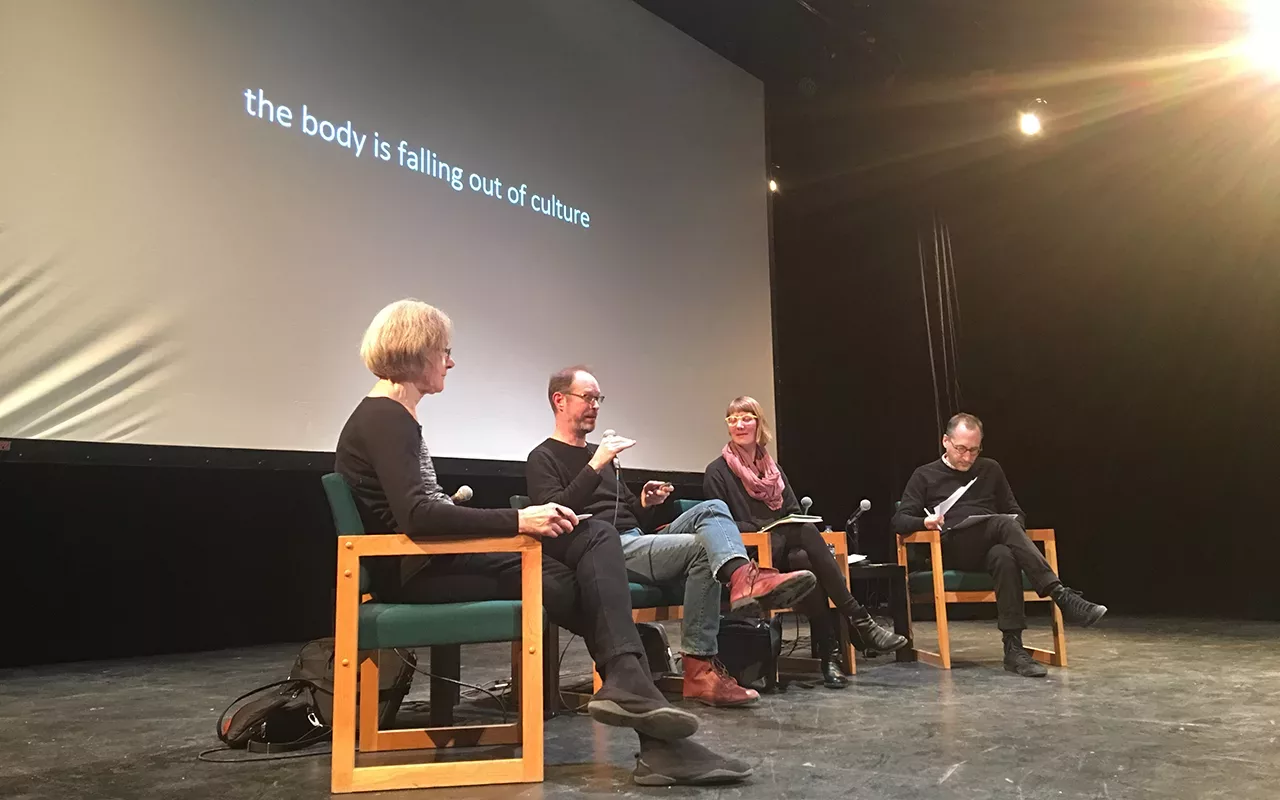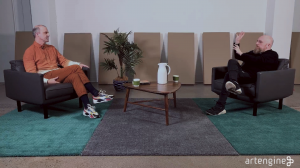
Body Mind Machine
An engaging panel with Kristin Anne Carlson, Davide Rokeby and Chris Salter, moderated by Nell Tenhaff which delves into different relationships artists are cultivating with machines.
What does it mean to speak of “aural culture?” What does listening offer, as a tool or technique for understanding our world, that visual perception cannot? The sounds that fill our lives are dense with information about the interwoven cultures to which we belong, and approaches to their investigation can take similarly varied routes. For Linda-Ruth Salter, language is a primary element of culture. Expressed aloud it is a richly coded meaning system, but it can also speak volumes when forced into silence. In Brendan Fernandes’ work, these aural codes are explored as forms of communication that have the capacity to build and sustain community, on one hand, but also as generators of difference that produce cultural gaps and social boundaries. In his creative process, Fernandes is constantly adapting to specific geographic places through sound. For the architect David Lieberman, however, the question “may not be [one of] listening to words,” but something closer to an aural tactility, in which spaces have the potential to embrace their human occupants, intellectually and physically. All panelists agreed on the political power of sound – that it intersects almost every aspect of our lives, and is part of larger mechanisms such as military systems, advertising, music, protests, and silence. Through an interdisciplinary approach, this panel asked, “How do the cultures we live in affect an understanding of sound and, vice-versa, how does sound shape culture?”
DIPNA HORRA is a multidisciplinary artist, architect, and educator living in Ottawa, Canada. She is a PhD student at the Azrieli School of Architecture & Urbanism at Carleton University and has received a Master of Fine Arts from Ottawa University. Horra has been an educator in the field of architecture and new media in New York and Canada. She has exhibited her art in numerous solo and group exhibitions nationally and internationally in Toronto, Ottawa, Montreal, New York City, Brooklyn, Berlin, London, and Dubai. Recent audio installations, such as Avaaz and Dhunia have addressed hybrid identity and transcultural synthesis with technology. These sound studies, questioning displacement and migration, are intersections in architecture, sculpture and cultural geography. Horra’s recent ephemeral spaces were created with autobiographical narrative, field recording, micro broadcasting, as well as hand made microphones and speakers.
The heart of the conference involves four separate discussions on the relationship of sound and space to be led by four artists/researchers; bringing together creative thinkers from Montréal, Toronto, New York City, San Francisco, and of course right here in Ottawa. Planned as dynamic free flow conversations, we are excited about what ideas will unfold from these exchanges! Building up to the major discussion panels is a keynote address from Dr. Barry Blesser, a digital audio pioneer and co-author of the fascinating interdisciplinary exploration – Spaces Speak: Are you listening? On Friday, a daytime symposium with the Carleton School of Architecture will explore specific ideas about the built environment and the sonic experience, while at night a collaboration with Pecha Kucha Ottawa brings together artists, designer and researchers for a rapid fire exploration of the role of sound in the urban fabric.
The voice plays an important role in this liberation, as does silence, along with the cultural and physical spaces within which these will resound.

An engaging panel with Kristin Anne Carlson, Davide Rokeby and Chris Salter, moderated by Nell Tenhaff which delves into different relationships artists are cultivating with machines.

In this conversation Tim Maughan chats with us about digital infrastructure, the role of organized labour in the creative landscape, and the DEL project Artwork_Local404. Join us, as we discuss technology and capitalism, the benefits of organizing, and what form collective action might take. Maughan also talks about how we need to rethink many of the platforms of tools of the digital world as public infrastructure: this may change how we understand what the government could do with them.